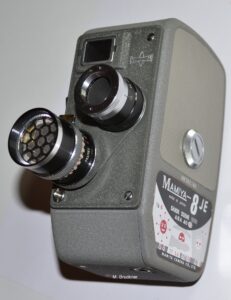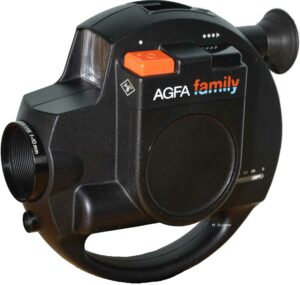Movie Cameras
At this point I would like to introduce three cameras for the „Normal 8“ and „Super 8“ film that was popular in the 50s to 70s.

The Zeiss Ikon Movikon B is a spring-loaded and surprisingly well-equipped film camera for the 1960s. Four different running speeds and single-frame switching can be selected. The built-in light meter is reflected in the viewfinder and allows you to react quickly to changing lighting conditions. Zeiss Ikon offered wide-angle and telephoto lenses, as well as a whole range of accessories for film processing.

The Mamiya 8 JE Equipped with two AA batteries, the small Mamiya can expose approx. 60m of film. That’s about 5 rolls of film. The 10mm optics available as standard can be supplemented with a 38mm telephoto lens and a 7mm wide-angle lens. The exposure meter available as an accessory (the strange thing with the shadow mask) is not coupled to the recording optics, and there is only one running speed (approx. 16 frames/s) available. The Mamiya impresses with its structural simplicity, which has been continuously improved over the years.

Unfortunately, the Agfa Family came onto the market in 1980 a few years too late. The camera was offered with a specially developed projector for around 500 DM. The special thing about the family was the possibility to take still pictures. The equipment of the camera was very simple. A fixed focus lens without a zoom had to suffice. Adjustable film speeds have also been dispensed with. At least an automatic exposure control was installed. Since video cameras with magnetic recording have been coming onto the market ever more cheaply since around 1975, only a few units were sold by the Agfa Family. The damage to Agfa was immense.
Continue with special formats or start page
